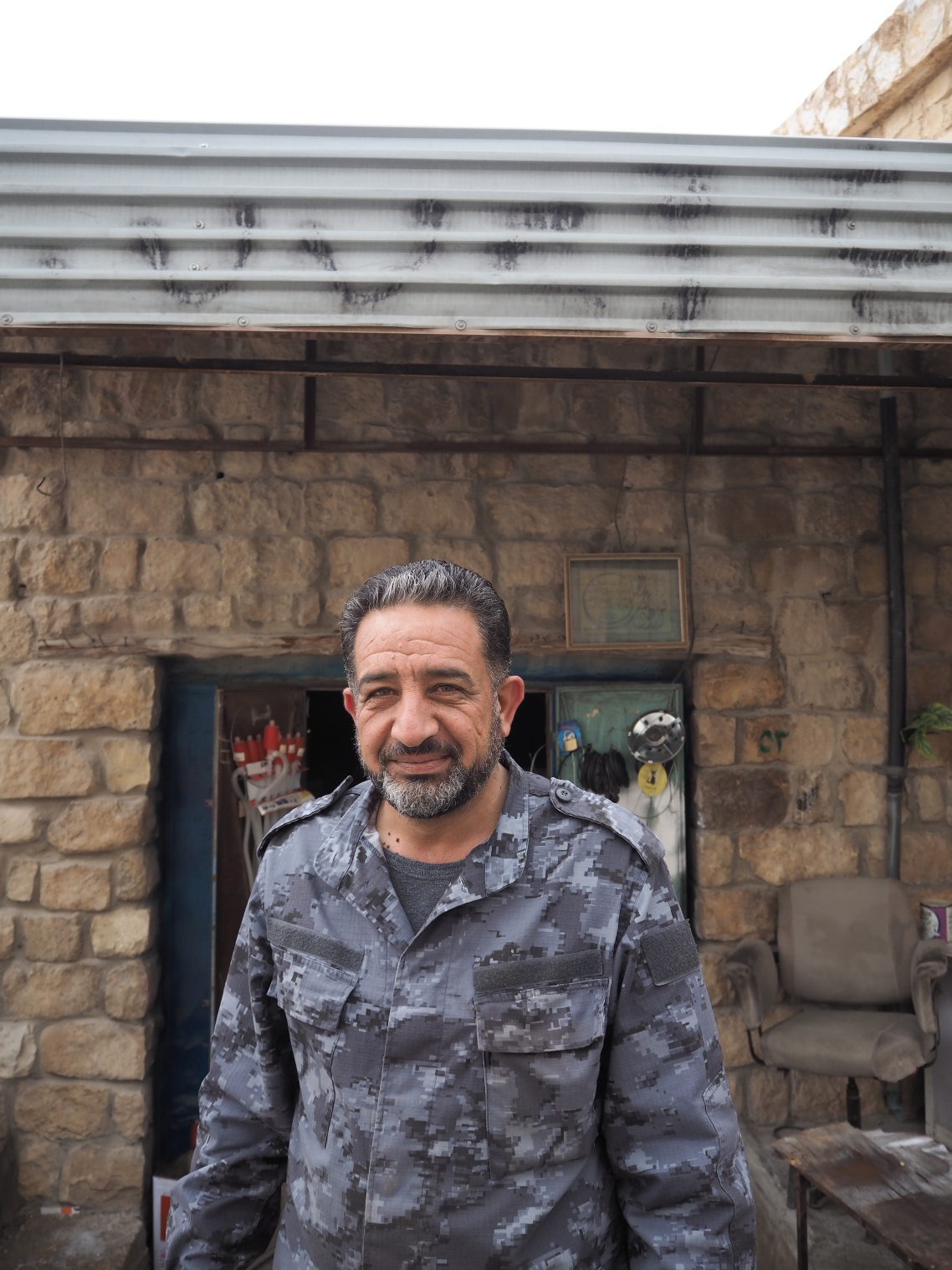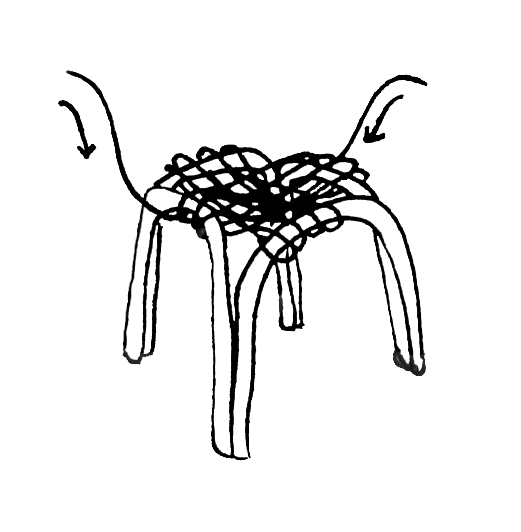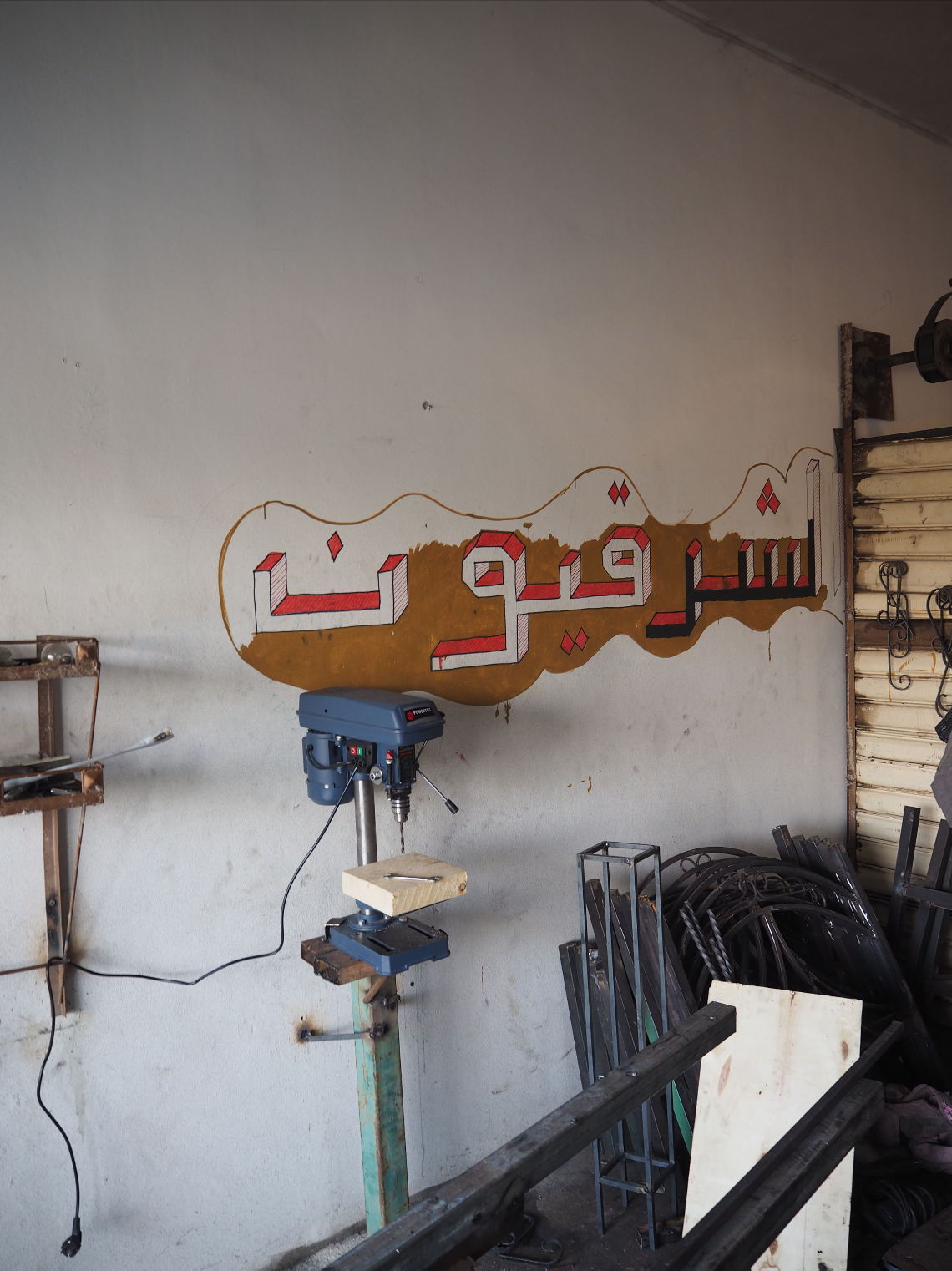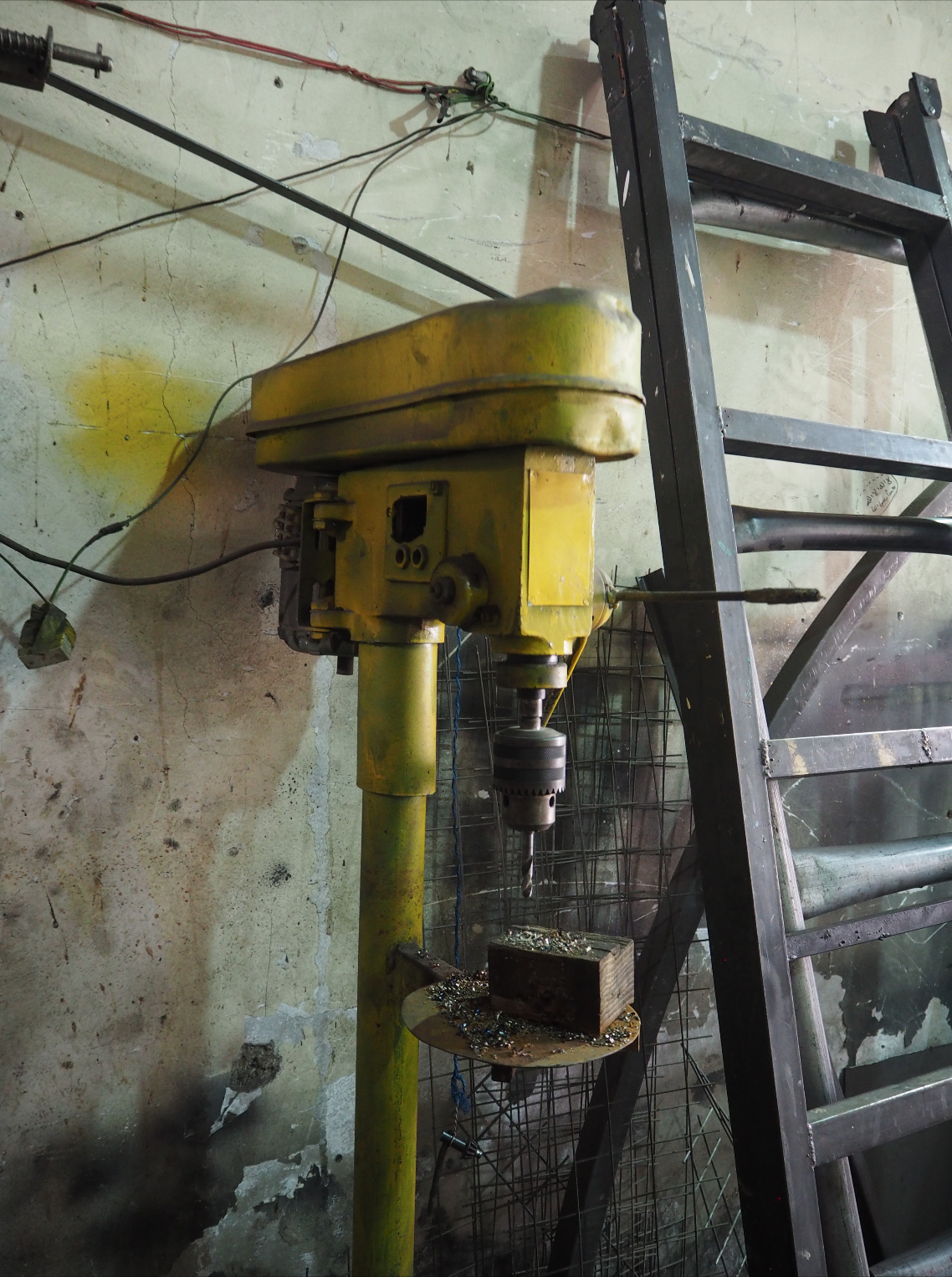First thing in the morning after I was walking
down to the village and ask for the blacksmith. I had breakfast in a local bakery and the baker wrote me down in a piece of paper the address of the blacksmtihand, which was the same that a taxi
driver confirmed few moments later, Tourist Street. It didn’t take me too long to
find Mohammed, the only blacksmith of Wadi Musa. Surprisingly he had a good
level of English, he explained to me that he started work in the workshop recently,
after his father’s death. Apparently, the designer of the “cursy” stool was his
father, Malik, who taught his son the art of working with metal. He only used
four identical bended steel tubes, with a weld in the upper and lower part of
the legs. Only the metal structure is sold, without the intertwined part, which
is a task of those who acquire it.
![]()
![]()
![]()
![]()




In fact, each stool that I saw and photographed had a different braided, depending on the necessity and on the availability of materials. The freedom given to the user from the smith , reminds me “Autoprogettazione” of Enzo Mari, who encourage the customer to build their own furniture in order to know the weakness of the product and be able to repair it. Of course, the Bedouin culture is characterized by their nomadic approach to life, that makes them handy people and capable of fixing and adapting objects.


